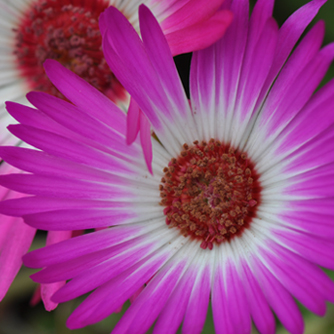Livingstone Daisies
BackLivingstone daisies may only be 10cm high but these hardy annuals from South Africa pack a real punch. To see them en masse with their iridescent daisy flowers in shades of yellow, orange, pink and purple will immediately raise your spirits and bring a smile to your face!
Being frost hardy, these succulent annuals will flower from mid winter into spring all around Australia. They perform extremely well in hot and dry conditions making them perfect for rockeries, pots and containers as well as edging plants. You’ll be the talk of the town with these fantastic little fellas in your garden as they put on a brilliant display that is second to none.
How To Grow Livingstone Daisies
Livingstone daisies love the sun. So much so that on cloudy days they will literally close their flowers up and hide. So choose a full sun position and sow seed from early autumn to early winter in all climates. Colder areas can also do a spring sowing. Soil preparation is minimal as they can tolerate poor soils as long as it is free draining. In clay soils apply gypsum to help break it up and improve the drainage.
Seed can be sown in punnets or direct in the soil. Seed is pretty small so take care to broadcast evenly. It also needs darkness to germinate so ensure seed is covered with soil (but not too thickly!). Water in with OCP eco-seaweed to get the seeds off to a good start. Germination takes up to 3 weeks so keep soil moist but not wet throughout this period. Overwatering can cause seedlings to rot off.

Close up of the Livingstone daisy flower
Sowing Guide for Livingstone Daisies
| Growing Zone | Sowing Time |
| Cool Zones | Summer (late), Autumn, Spring |
| Mediterranean Zones | Summer (late), Autumn |
| Warm & Temperate Frost Free Zones | Summer (late), Autumn |
| Subtropical Zones | Summer (late), Autumn |
Fertilising & Maintenance of Livingstone Daisies
Livingstone daisies will grow and flower without any fertilising but of course if you want bigger plants and more flowers then apply OCP eco-seaweed and OCP eco-aminogro every 2-4 weeks.
As a succulent Livingstone daisies require less watering than other annuals and will happily handle periods of neglect, oops, we meant dryness
Plants will die off as as the hot weather appears in mid to late spring (or later in cool regions). When removing dead plants give them a good shake to spread plenty of seeds about to self seed next year.

Livingstone daisies always look best when mass planted
Pests and Disease Problems for Livingstone Daisies
Livingstone daisies are generally trouble free provided they have free draining soil and aren’t over watered. Too much moisture will cause fungal problems and rotting.
Snails and slugs might attack seedlings so watch the plants and spread some OCP eco-shield pellets around if needed. Caterpillars may also cause damage and can be controlled with OCP eco-neem.


